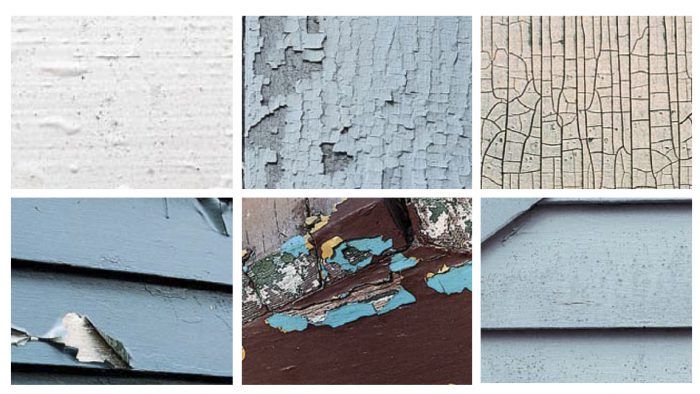How to Identify Why Exterior Paint Is Failing, and How to Avoid It
Cracking, flaking paint not only looks bad—it also invites water and weather inside to do more damage.

Synopsis: Failing paint on a house’s exterior not only looks bad, but it also doesn’t provide protection against the elements. In this “How It Works” article, professional painter Tim Leahy identifies 11 causes of paint failure, most of which have to do with errors made during application. He then shows which of 10 manifestations of failure are linked to which causes.
We’ve all seen it. A drive through almost any neighborhood in the nation reveals homes whose paint is perfect and pristine next to others whose paint is bubbled, peeling, or actually flaking off. Paint failure not only looks bad, but it invites water and weather inside the building envelope where it can cause serious damage.
In the coastal New England communities where I work, a good exterior paint job should last about three years. In a less harsh environment, a paint job on exterior wood should last five years or more. When premature paint failure occurs, it leaves homeowners, contractors, and paint suppliers with the same question: Why?
Although there are some telltale signs that point to a specific cause for a paint job gone bad, many of the factors leading to premature paint failure are related to conditions during application, making assessment after the fact difficult. It is far easier to identify conditions that can lead to failure and eliminate them at the time of application—before they result in separation of the paint from the surface it was designed to protect and beautify.
Paint Failures
Poor surface prep – The bond between paint and wood is a mechanical one, so sanding the surface is critical for strong adhesion. New clapboards, in particular, have a dense, shiny “mill glaze” that, unless removed, interferes with the ability of the primer or stain to penetrate the wood. When repainting previously coated surfaces, it is important to ensure that the old paint is adhering well and that the surface is abraded so the new coat grabs tight.
No primer – Primer seals in tannins, fills pores, and binds wood fibers to create a non absorptive, sandable surface to which topcoats readily adhere; it also protects end grain from damaging moisture. Without primer, paint can absorb into the wood, which will make it dry too fast, compromising film integrity.
Sun and wind – Water-based paints (the term “latex” is really a misnomer; modern water-based paints contain no latex) dry when their solvent (water) evaporates, moving the binder and pigment closer together in what is called binder coalescence. Oil paints cure when their solvent (oil) reacts with oxygen in the air (oxidation). For both, excessive heat, UV exposure, or wind can accelerate surface drying, especially with darker pigments, leaving the paint beneath uncured and compromising long-term adhesion and durability.
Cold – If applied at too low a temperature (below 50°F, generally), the binder in water-based paint is unable to fully coalesce with the pigment into a durable film. Cold retards the curing of oil paints as well but results more often in surface imperfections than film failure.
Contaminants – Where there is dust, mildew, or salt glaze, paint will adhere to that and not the surface. These can be removed with specialized house washes such as Jomax.
For more on the common causes of paint failure, click the View PDF button below.





